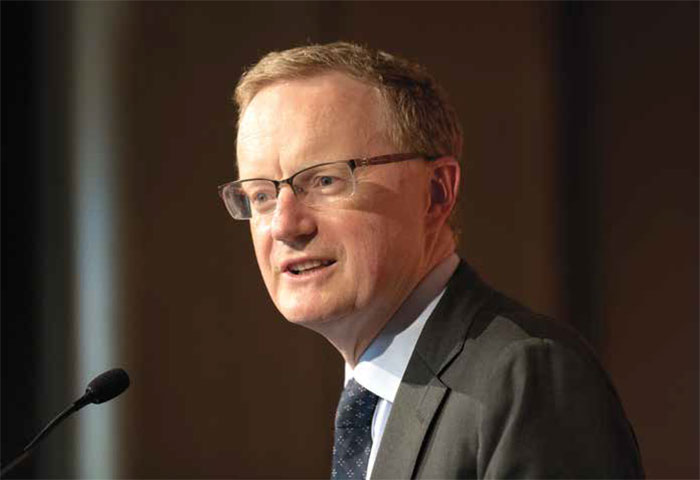Reserve Bank of Australia Annual Report – 2018 Governor's Foreword

The global economic expansion continued over the past year. Unemployment rates in many countries have declined further and, in some cases, are at multi-decade lows. Inflation rates remain low, but have generally moved closer to central bank targets. Financial conditions are still expansionary, although they are gradually becoming less so.
This improvement in the global environment is helping the Australian economy. Higher commodity prices and stronger employment growth have provided a welcome boost to incomes. Economic growth has gradually picked up and inflation is moving closer to the Reserve Bank's target. Higher levels of public and private investment are also supporting the economy.
Against this more positive backdrop, the Reserve Bank focused on a number of developments over the past year. The first was the risk to the global economy from a move towards protectionism. Australia is a major beneficiary of the open, rules-based international system and has a strong stake in this system continuing. A second issue was the subdued growth in wages in Australia. The slow growth in wages has boosted the number of Australians with a job, but has also led to slower income growth for many individual households and less inflation pressure than otherwise. A third issue was the high level of household debt in Australia, which carries certain risks. The Bank has worked closely with the other members of the Council of Financial Regulators to ensure that lending standards are appropriate for this environment. Close cooperation between the various regulatory agencies continues to be a positive and distinguishing feature of Australia's regulatory arrangements.
The Reserve Bank Board held the cash rate steady at 1.5 per cent over the past year, with the most recent change in monetary policy having been in August 2016. Over this period, the Bank has sought to be a source of stability and confidence while further progress is made in having inflation return to target and the Australian economy move closer to full employment.
The past year was marked by the completion of some major national interest projects by the Reserve Bank. These have required significant investments in technology. One of these projects was the development of a core part of the payments infrastructure that allows Australians to move money between bank accounts easily in real time and with detailed information about the payment. As the banker to the Australian Government, the Reserve Bank has also made significant investments in its banking systems to allow government agencies to use this new payment system. A major upgrade of the arrangements for the storage and distribution of banknotes was also completed. The new highly automated and secure storage facility and processes are designed to meet Australia's banknote needs well into the future. A new high-tech $10 banknote was issued as part of the Bank's efforts to keep Australia's banknotes safe and secure. This follows the issue of the new $5 note in 2016. Plans are well advanced for the issue of a new $50 banknote later this year, with the same world-leading security features.
The Reserve Bank is committed to a high degree of transparency and accountability as Australia's central bank. Over the past year, senior staff gave over 50 public speeches and had many meetings with business and community groups. The Bank has also devoted considerable resources to its public education program, with a particular focus on economics students and teachers. Our aim is to support and encourage the study and understanding of economics in Australia.
Reflecting the completion of some large projects, there was a small decline in the number of Bank staff over the past year and a further reduction is expected in 2018/19. The Bank's general operating costs, excluding depreciation, increased by 1.4 per cent in 2017/18. Capital expenditure declined by more than half, reflecting the completion of projects.
The Bank recorded an accounting profit of $3.8 billion in 2017/18. Earnings were boosted by valuation gains on the Bank's foreign assets because of the depreciation of the Australian dollar. An amount of $669 million was available for distribution to the Australian Government, comprising underlying earnings less realised valuation losses. A revised risk-based capital framework was introduced in 2016/17, with the current level of capital slightly above the Board's target level. Accordingly, the Reserve Bank Board did not seek a transfer to the Bank's reserves and the full amount of $669 million available for distribution will be transferred to the Australian Government. The Bank continues to have a strong balance sheet.
The Reserve Bank's staff share a strong commitment to high standards and serving the public interest. They go about their work with a high degree of professionalism and have achieved much over the past year. The Reserve Bank Board joins me in thanking the staff for their work and for their service to the Australian community.

Philip Lowe
Governor
23 August 2018